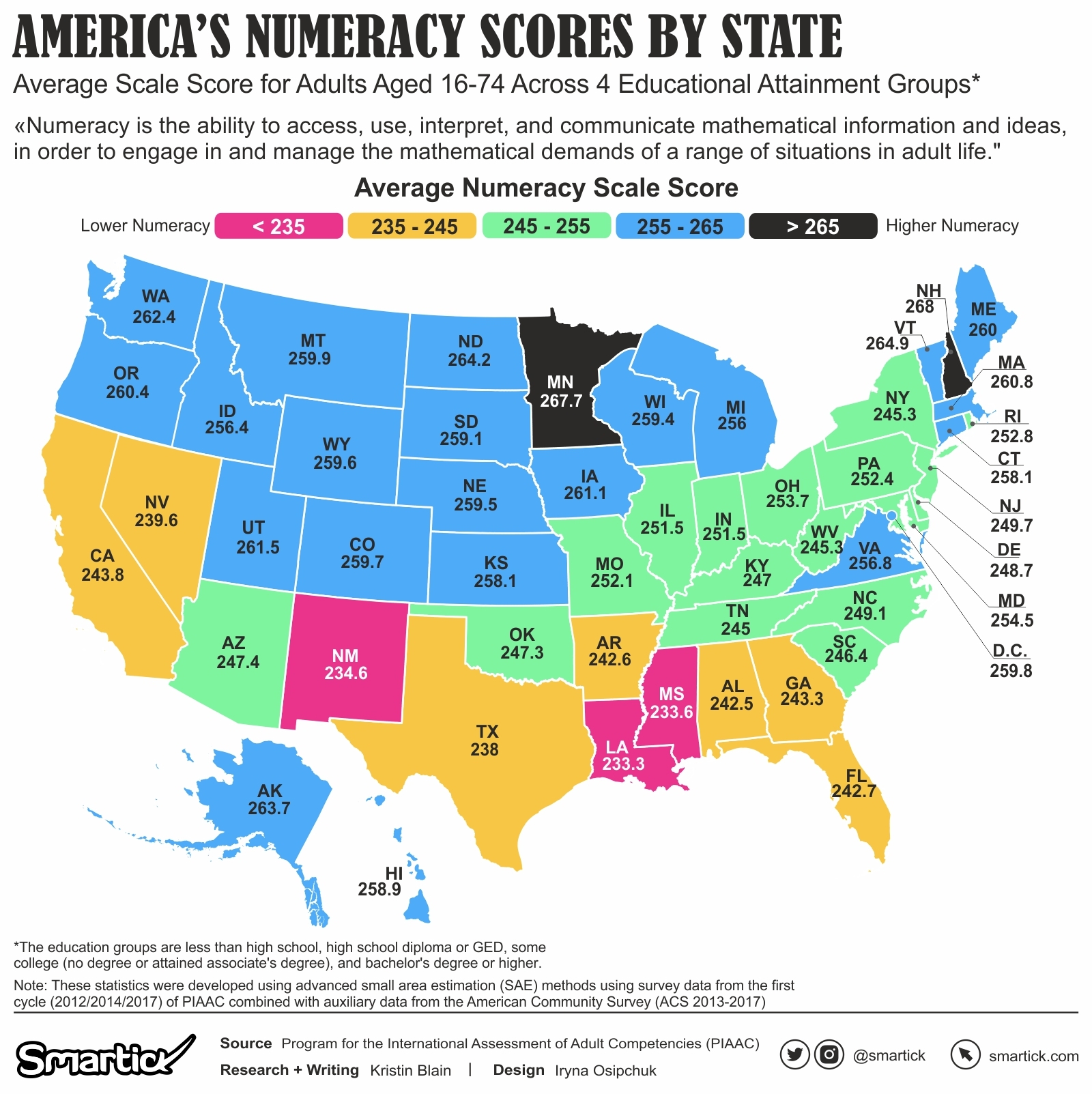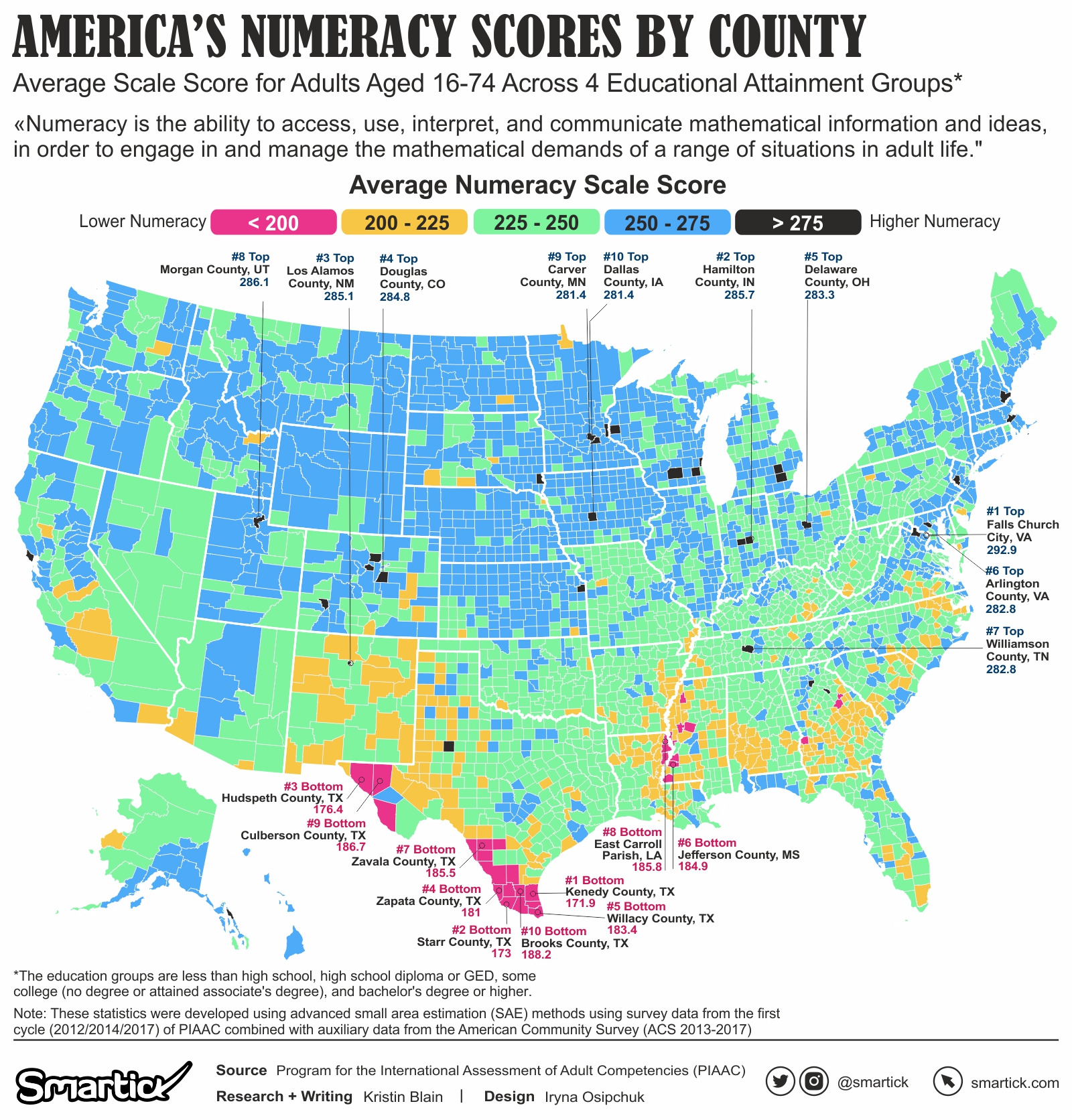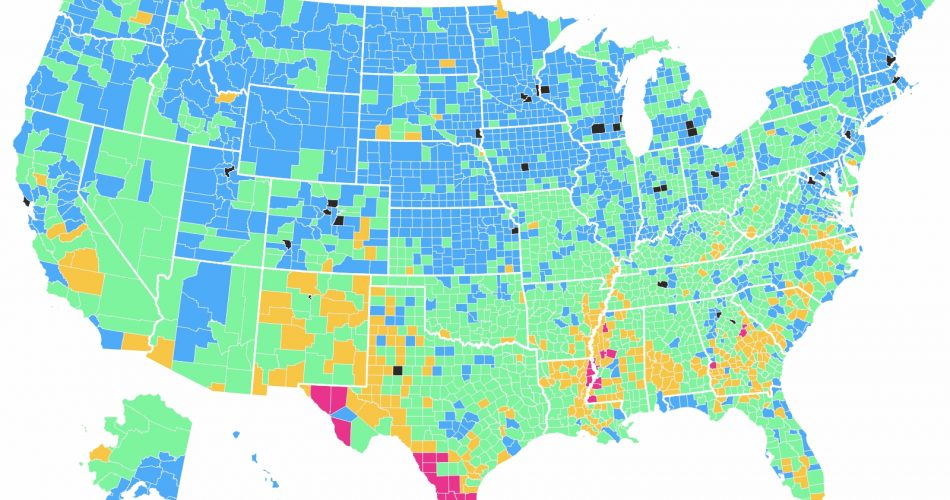
Numeracy, a term often reduced to basic arithmetic or the ability to crunch numbers, holds a far-reaching significance. The Program for the International Assessment of Adult Competencies (PIAAC) provides a nuanced definition:
Numeracy is the ability to access, use, interpret, and communicate mathematical information and ideas, to engage in and manage mathematical demands of a range of situations in adult life.
But how do different regions in the U.S. fare in living up to this robust definition? It’s time to go on a numerical journey across the country, spotlighting both stars and underperformers in literacy.

When we unfurl the map and trace the numeracy scores across the nation, a vibrant tapestry emerges, displaying a rich blend of academic strides and areas yearning for attention.
The Northeastern states continue their tradition of academic excellence in numeracy. New Hampshire, standing tall with a score of 268, leads this vanguard. It’s closely followed by Vermont (264.9), together projecting the region’s strong numeracy foundation.
A remarkable surge from the distant terrains of Alaska (263.7) and the bustling District of Columbia (259.8) speaks of the diverse environments that prioritize mathematical acumen. Whether from icy expanses or urban hubs, the commitment to numerical literacy remains unwavering.
The Midwest and the Pacific Northwest, known for their strong educational heritage, don’t disappoint. Minnesota, just a hair’s breadth from New Hampshire at 267.7, sits prominently on this tableau. Iowa (261.1), Washington (262.4), and Oregon (260.4) further solidify these regions’ standing, highlighting an enduring commitment to numeracy.
However, as we navigate southwards and towards the southwest, there’s a noticeable shift. States such as Nevada (239.6), Texas (238), Louisiana (233.3), and New Mexico (234.6) present scores that underscore the pressing need for numeracy interventions. The sun-kissed expanses of California, with a score of 243.8, find themselves at a crossroads, caught between their innovation-rich legacy and a call to bolster their numeracy achievements.
In its entirety, America’s numeracy tapestry is diverse and intricate. While certain states, including North Dakota (264.2) and Utah (261.5), maintain a firm middle ground, the difference between the trailblazers and the ones trailing behind is unmistakable. The collective ambition is clear: Elevate every part of this vast mosaic, ensuring a nation equipped with robust mathematical skills.

Local Prodigies: Top 10 Counties in Numeracy
On a closer look, certain counties stand out as pillars of numeracy. Virginia’s Falls Church City (292.9) leads the pack, followed closely by Indiana’s Hamilton County (285.7). From the esteemed hub of New Mexico’s Los Alamos County (285.1) to the serene landscapes of Iowa’s Dallas County (281.4), these locales embody a commitment to mathematical excellence.
Areas of Concern: 10 Counties Struggling in Numeracy
The spotlight, however, also reveals regions in need of immediate attention. Texas paints a particularly worrying picture, with counties like Kenedy (171.9), Starr (173), and Hudspeth (176.4) ringing alarm bells. Mississippi’s Jefferson County (184.9) and Louisiana’s East Carroll Parish (185.8) further punctuate the need for focused interventions.
As the chapters of America’s numeracy tale unfold, a mosaic of achievements and challenges emerges. While many areas glow with mathematical prowess, others linger in the shadows, awaiting the transformative power of education. Our collective aim is evident: Ensure every American, irrespective of their locale, possesses the skills to tackle life’s mathematical nuances. With determination, innovation, and collective effort, the future promises a nation unified in its numeracy endeavors.

